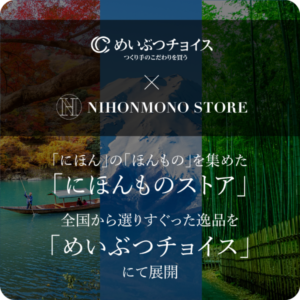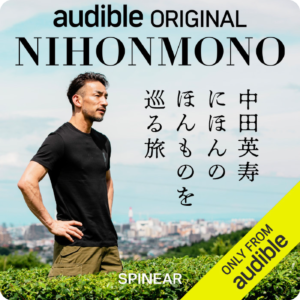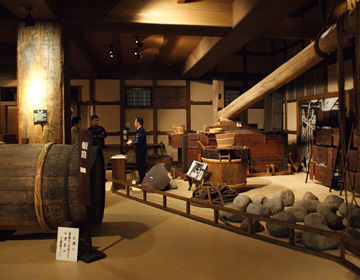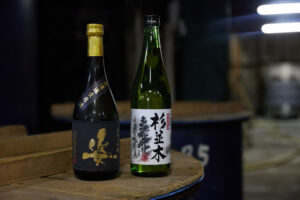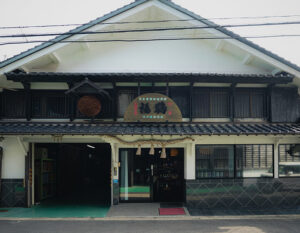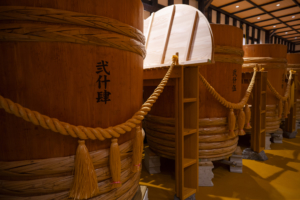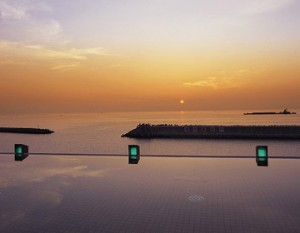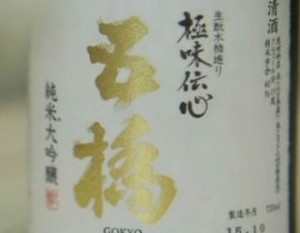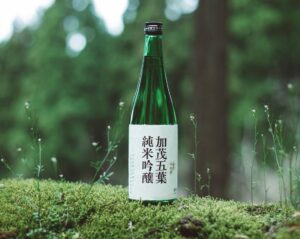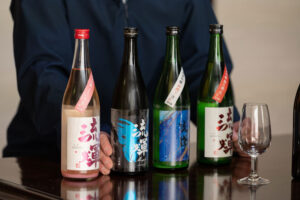Nada’s Sake Spread by Maritime Transport
Nada (southeastern Hyogo Prefecture) is famous for its sake production. Japan’s leading sake breweries are concentrated in the five districts known as Nada Gogo, and 30% of the nation’s sake is produced in Nada.
One of the reasons Nada’s sake has become nationally famous is because of shipping. Until then, sake was mainly transported overland, but Nada’s coastal location made it possible to transport sake to Edo (present-day Tokyo) by cask-carrying ships. Nada’s sake was therefore widely distributed in Edo, where it became known as “sake from downstream,” and quickly gained fame.
Kiku-Masamune, famous for its commercials
Kiku-Masamune,” famous for its commercial “I am Kiku-Masamune after all,” is another sake brewery in Nada. It was founded in 1659 during the Edo period (1603-1868) by Jirotayu Munenori Kano (Hon Kano family), who started brewing sake. Most of the sake produced by the Hon Kano family was “sake that goes down the drain,” which was especially loved by the people of Edo, and the family was proud of its fame from that time onward.

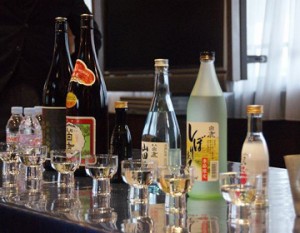
Together with Yamada-Nishiki, a characteristic of the region
In 1882, Kikumasamune purchased a then-expensive microscope from Germany, invited engineers to Japan, and built a sake cellar made of bricks with high thermal insulation. It was around this time that the Kiku-Masamune trademark was registered.
Sake rice, which is necessary for sake brewing, was also produced using the characteristics of the region. Every year, the rice fields in Yoshikawa-cho, Miki City, Hyogo Prefecture, are planted with Yamada-Nishiki, the highest grade of sake rice. The viscosity of the soil and the difference in temperatures are considered to make the environment extremely suitable for this rice.
Nakata visited a terraced rice field in a satoyama that has been protected by sake rice growers. Mr. Mukai, chairman of the Kano Kai East Branch, said, “Yamada-Nishiki is tall, so we have to be very careful about winds and typhoons. These terraced rice paddies have been used for a long time, and although they cannot be mass-produced, they produce particularly high-quality Yamada-Nishiki,” he said. The group of professionals who have been producing Yamada-Nishiki for generations is indispensable.

Dry Kiku-Masamune for a mid-meal drin.
Kiku-Masamune’s well-known commercial says, “When you see good food, you want dry Kikumasa.” As the catchphrase suggests, Kiku-Masamune’s belief is that the best sake is the one that complements food without being boring to drink.
The best sake for a meal is, after all, dry. There have been booms in sake, and there was a time when sweet sake was popular, but Kiku-Masamune has consistently stuck to dry sake.
Overcoming the crisis, Kiku-Masamune will continue to be particular about its sake.
Kiku-Masamune has a 350-year history, but during World War II, the brewery was in a state of crisis when it was reduced to three breweries due to bombing. Despite this, Kiku-Masamune was able to make such a great comeback, thanks in no small part to its commitment to “dry sake that brings out the best in food.

